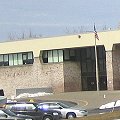- By Dan Veaner
- News
 Print
Print  Now that the revolving door to the Lansing School Superintendent's office seems to have finally stopped spinning, the district is working on long term strategic planning that is long overdue. While a long term plan was developed during Mark Lewis' short tenure, a successful strategic plan requires consistent leadership to see the plan through. This year school officials are working on a new strategic plan to be developed with input from all the different stakeholders. In the Spring students, faculty and staff were surveyed to determine their perspective on the district's strengths and weaknesses. Now it's the community's turn.
Now that the revolving door to the Lansing School Superintendent's office seems to have finally stopped spinning, the district is working on long term strategic planning that is long overdue. While a long term plan was developed during Mark Lewis' short tenure, a successful strategic plan requires consistent leadership to see the plan through. This year school officials are working on a new strategic plan to be developed with input from all the different stakeholders. In the Spring students, faculty and staff were surveyed to determine their perspective on the district's strengths and weaknesses. Now it's the community's turn.| If you live in the Lansing School District Click Here to take the survey. | ||
The strategic planning process began at the beginning of this year, and Grimm says that he hopes to identify the district's top goals by December. That will be important in determining how next year's budget is developed, especially in light of the certainty that there will be further cuts and layoffs due to a 'funding cliff' caused by cuts in state aid and other school revenues.
"We have to look at precisely what we need to do," Grimm explains. "What is our core mission and vision? We've done that through our strategic planning, which is a pretty comprehensive vision. An example would be that if we are looking at the whole child and the vision is that extra-curricular activities are part of the whole theme of student success, then when we're looking at saving money we're not looking at lopping off programs that are important to the whole child. We're not saying, 'Just do math, science, English and social studies and cut sports.' It's more 'lets see how everybody can take a hit so we can have the same opportunities, but they look a little different in how we deliver them."
The survey only takes a few minutes to fill out. It asks about your experience with the district and the people who work there. The questions are fairly general, though there are spaces to add your own comments about what is best and worst about the district. Grimm categorizes negative replies as 'opportunities for growth' and says that the top priorities will be themes that emerge from all three surveys. When students, employees, and the community agree on a need it will rise to the top.
"It was difficult during this past budget season because we were identifying our priorities as we were moving through the cutting phase," Grimm says. "When we have priorities identified through the strategic planning process we'll be able to move a little bit more swiftly through the budget process. It will be more about 'how are we going to do this differently' instead of 'what are we going to cut?'"
Cutting is one thing, but when there are staff reductions the remaining people can either try to do what those who leave were doing on top of their own work, or find innovative ways to deliver the same quality education, but perhaps in a different form. Grimm says that in any school or business culture it is hard to accept change, even when people don't like something about the existing way of doing things. But he says including all the stakeholders in the planning gives them a buy-in that may encourage them to develop and try something new.
"You start building the road map together. Through that collaboration we're able to get the movement that is needed in the culture," he says. "Any culture in an organization is always the challenge, because the easiest thing to do is to stay the way we are. Especially if you are a district employee, because much of the change that would be stimulated through the strategic planning process will result in actions that are performed by district employees. They are either going to be doing more of something, or something different which requires more work. It's natural human behavior to resist that."
Grimm says the strategic planning committee is divided into four task forces that will use the survey results to determine goals for community engagement, one for student success in each of the buildings, fiscal opportunities, and then facilities, transportation, and safety. Each of those task forces will look themes or general conclusions they can get from the surveys, and analyze the data further. When they need more information they may also work with focus groups to analyzes particular issue.
The deadline for filling out the survey is July 20, but Grimm says that responses will be accepted up to a week after that.
----
v6i27



